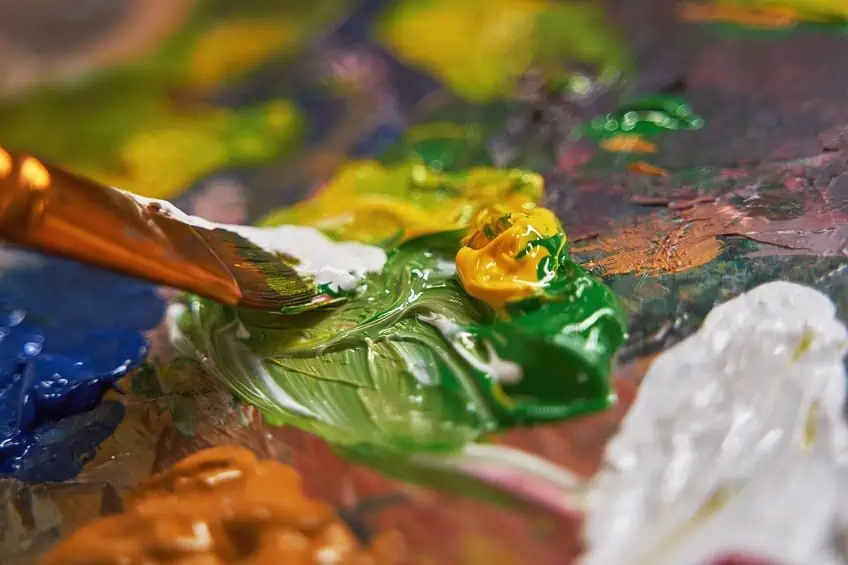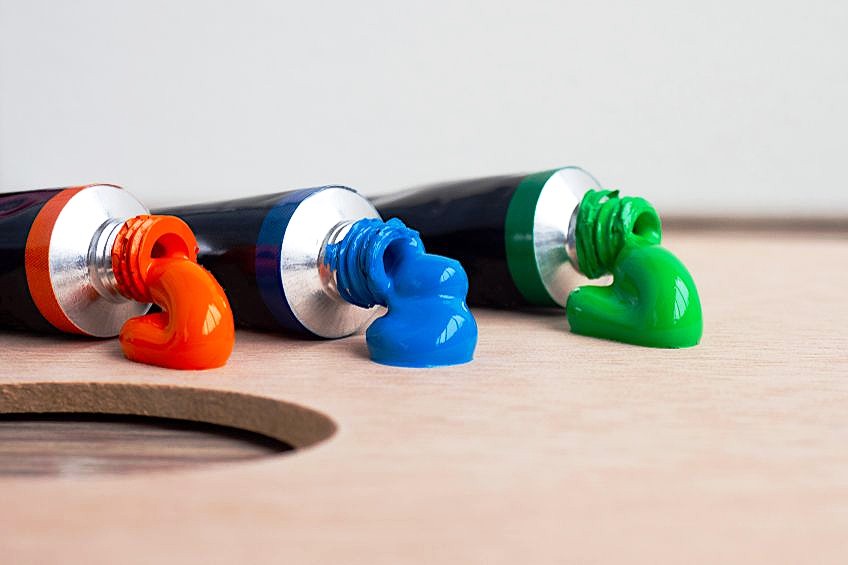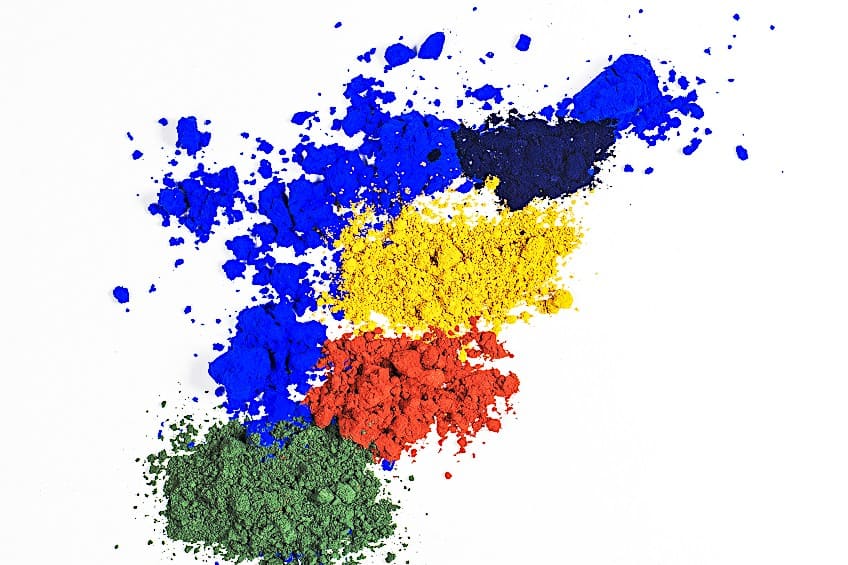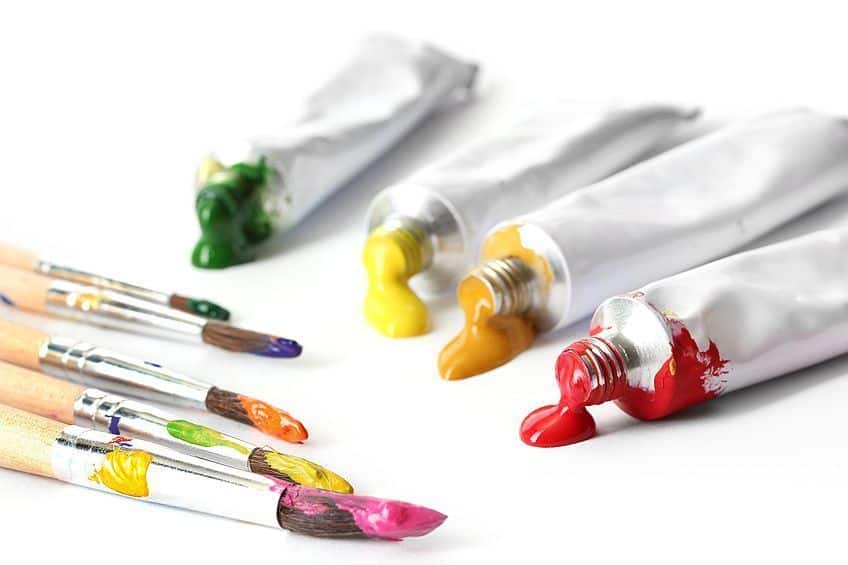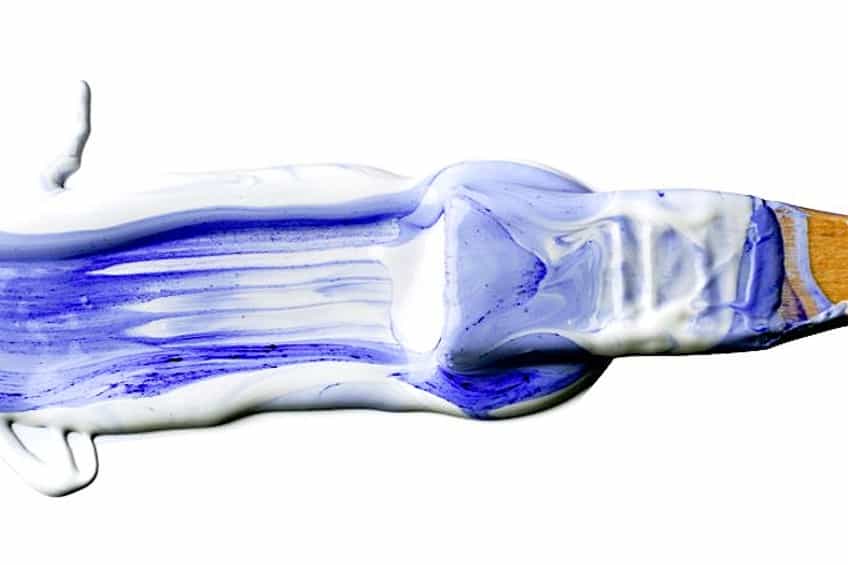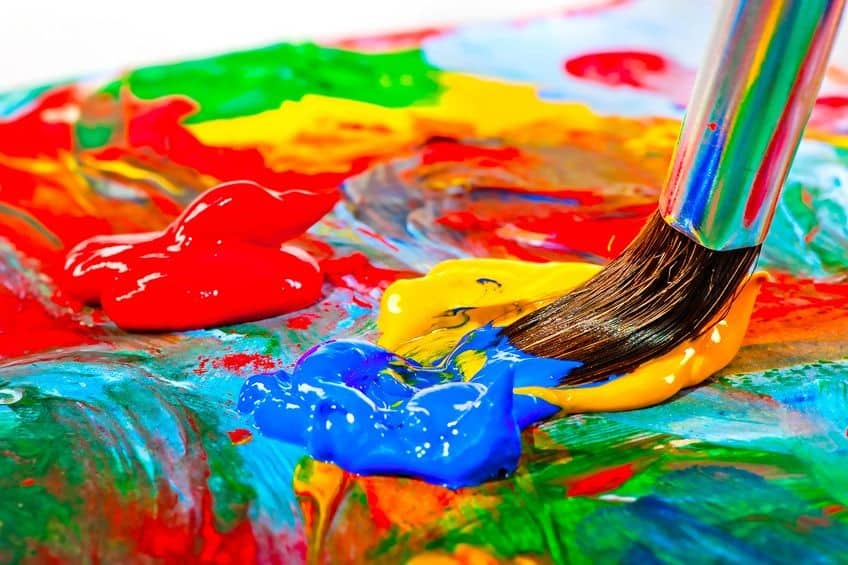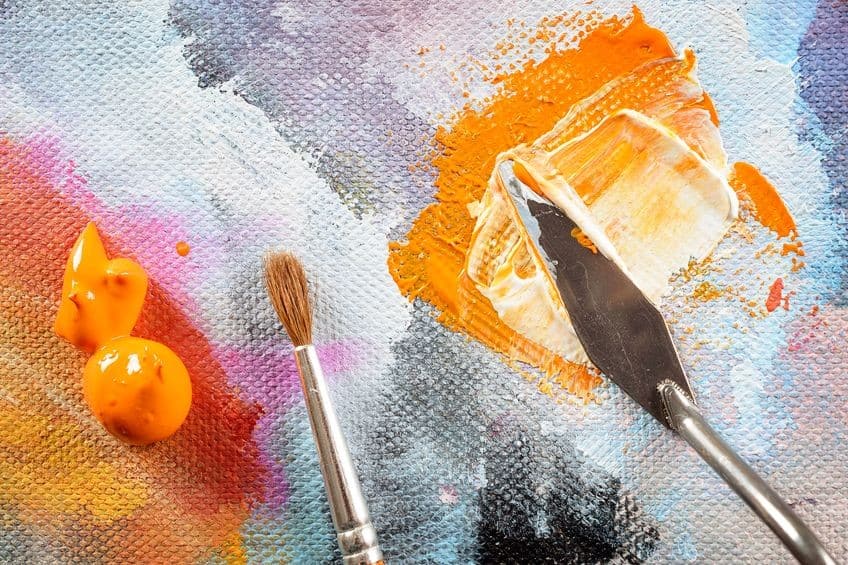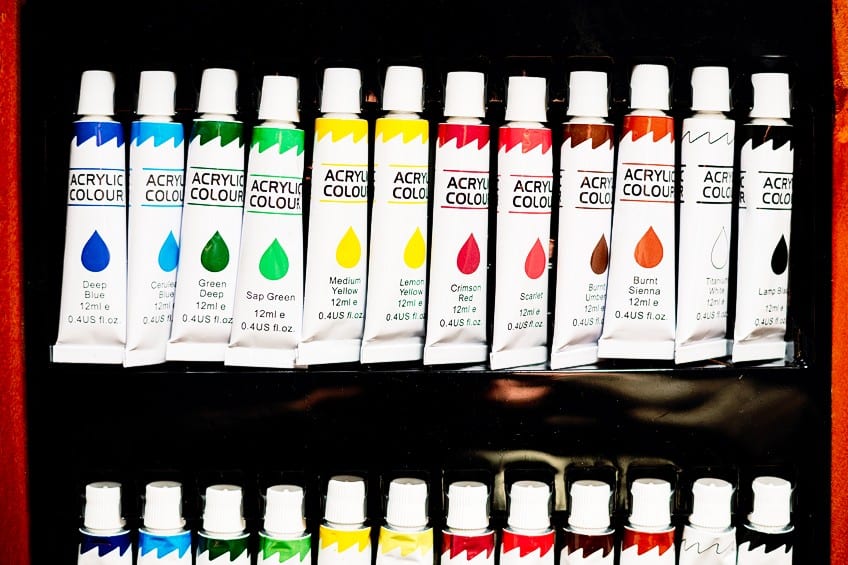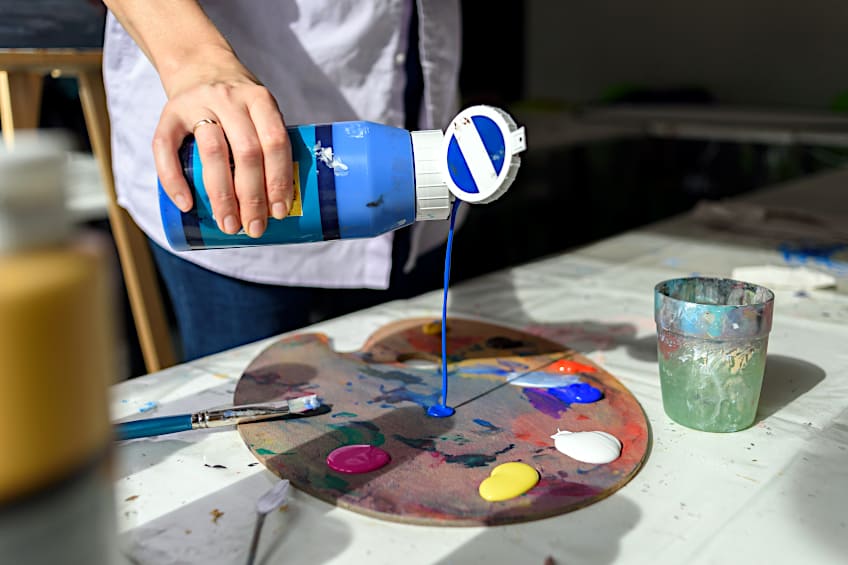How to Thin Acrylic Paint – The Best Way to Thin Acrylic Paint
While we could all possibly agree that in the world of fine art, oil paints carry the highest degree of prestige; this is not to say that it is the most popular variety of paint bought, sold, and used worldwide. This accolade would instead go to acrylic paint, a partly synthetic material that is both affordable and easy to use. While already available in a wide variety of colors and consistencies, you can learn how to thin acrylic paint to produce an even greater amount of either. If you want to learn how to thin acrylic paint yourself, you have come to the right place!
Contents
What Is Acrylic Paint?
Before we get into the thick of the matter, let us pause first to discuss acrylic paint itself. If you want to learn how to thin acrylic paint, you should start by developing an understanding of the paint medium you are working with. If you are interested in learning more about acrylic paint itself, you are definitely in the right place. We are going to discuss its history, ingredients, and uses.
History and Popularity
It would take until the 1940s for acrylic paints to come into existence following German chemist Otto Röhm’s invention of acrylic resin in 1934. Before this, most paints used in both art and otherwise were predominantly oil-based. Today’s acrylic paints are primarily water-based but initial iterations were made using mineral spirits as the vehicle base.
Acrylic paint is defined by its use of acrylic polymer as the binding agent.
Although oil paints are still considered a more prestigious and aesthetically pleasing medium in fine art, the world of arts and crafts is completely dominated by acrylic paint. More so, acrylic paint boasts utilitarian functions better suited for use in practical tasks outside of art. Acrylic paint is commonly used for decorative and commercial purposes. This considered, there is a strong argument in favor of acrylics being the most popular type of paint in modern times. It also helps that acrylic pain is significantly more affordable than most of its oil-based counterparts.
Better yet, the color variety of acrylic paints is incredibly varied. Acrylic paint also has a shelf life of approximately 10 years, making it easier to store than other paint options as well. Most people who work frequently with acrylic paint will also tell you that the paint’s fast drying times also contribute immensely to the sustained popularity of the medium, especially when you draw comparisons being it and oil paint.
While even the most subtle of details produced using oil paints can take more than a day to dry, thin layers of acrylic paint will dry in fewer than 15 minutes and thicker layers take between 30 minutes to an hour.
The acrylic polymer binder present in this paint is also highly flexible, lending the paint a level of elasticity that provides a fair degree of stress resistance. Acrylic paints are thus not only cheaper and quicker to dry, but also less likely to chip, flake, or crack, even when exposed to extreme or oscillating weather conditions. When the temperature gets hot, the polymer can expand, and vice versa when the temperature drops. This means that acrylic paints offer a ton of utility for outdoor decorative work.
What Is Acrylic Paint Made Of?
Acrylic paints will typically contain three primary ingredients. This includes the acrylic binder, the pigment, and the vehicle. In the case of most acrylic paints, water typically serves the role of the lattermost ingredient.
Pigments
Pigments are what we call tiny granular particles that we mix into a paint’s binder to give it its color. Pigments come in the form of powder, which can be mixed into liquids without dissolving. They will instead remain suspended in the binder and give the paint its color. It is also little to no affinity between pigment particles and most painting surfaces.
Affinity is the measurement of two different substances’ ability to combine with each other. Thus, having a low affinity allows pigments to rest on surfaces without dissolving into them.
The most common method of coloring paint entails the use of pigments. Crushed clay, plants, and other natural resources were among the first pigments humans ever created and began painting with. Many paints nowadays, such as oil-based paints, are still produced using natural minerals.
However, we have found a means to synthesize our very own pigments. You can now find both organic and inorganic pigments.
Binders
Once the vehicle evaporates off the painted surface, the binder is what remains to keep the pigments adhered to said surface. Instead of evaporating, the binder will dry and harden, forming a protective layer over the pigment which holds it in place while making it resistant to water and sun damage.
Acrylic paint actually gets its name on account of its binding agent.
Called acrylic binder, this binding agent is formed from a mixture of transparent artificial materials called acrylic polymers. Once dried, the acrylic polymer forms a shield layer above the pigments, adhering them to the surface. Also, much like laminating paper, the binder provides some sort of protection to the painted surface and its pigments.
Vehicles
In the context of paint, vehicles are the liquids that carry the pigments and binder in a viscous form that can be applied and spread across surfaces. The point of the vehicle is to transfer the pigment and binder to the surface and evaporate thereafter while to binder hardens to lock the pigment into space. For the majority of fine art’s history, we have been using oil as the vehicle.
Nowadays, however, water-based paints are becoming the new norm on account of their greater affordability and faster drying times.
This is where acrylic paint comes into play. Using water as the vehicle, what is created is called polymer emulsion. This is a paint mixture that dries onto a surface within a fraction of the time as with oil paints. While thin layers of oil-based paint can take upwards of 24 hours to dry, thin acrylic paint layers will dry within 15 minutes.
Additional Acrylic Paint Ingredients
Pigments, acrylic binders, and water-based vehicles make up the core ingredients of acrylic paint but they are not the only things we see mixed into most modern paint mixtures of the same variety. There are many additional materials added to most acrylic paints to improve or introduce additional properties that make the paint better suited to the task at hand. Here are a few examples:
- Buffers can regulate the pH level of acrylic paint. This will protect the paint against mold, extreme weather, and other environmental conditions. It also expedites drying times.
- Initiators can be mixed into acrylic paint to spur polymerization. Initiators are often composed of free radicals or peroxides and help speed up the rate at which the binder dries.
- Surfactants are wetting agents that moderate the aqueous emulsion of acrylic polymers while also bettering the dispersion of pigments. Non-ionic materials such as polyethylene oxides can work as surfactants for acrylic paint.
- Defoamers can be mixed into acrylic paint to prevent the formation of suds and bubbles in the paint. This can prevent bubbles from forming on the surface of your paintings.
- You can add stabilizers to acrylic paint to give it any number of additional properties. The sort of stabilizer you would use depends on the requirements of the project. If you plan on painting the exterior of your house, for example, you would want to add a stabilizer that provides additional protection from weather damage.
How to Thin Acrylic Paint
By now we have established some important things regarding the composition of acrylic paint. As described, water is most commonly used as the vehicle for acrylic paints. What this means is that water is the mechanism (or “vehicle”) used to spread a comparatively small amount of pigment and binder across a larger surface area.
An acrylic paint thinner is essentially a liquid that when poured into a mixture of paint will increase the surface area that can be covered by the mixture.
But besides increasing the volume and spreadability of paint you get to work with, an acrylic paint thinner can achieve several other useful functions as well. You always have the easy option of using your acrylic paints straight from the tube, but you can also learn how to thin acrylic paint to produce different interesting effects.
The best part about learning how to use paint thinner for acrylic paint is that it is incredibly simple. It is super easy to get the hang of and the practice itself is not very time-consuming either.
Now, allow us to discuss some of the most common forms of acrylic paint thinner and popular methods of thinning acrylic paint. The following approaches to using paint thinner for acrylic paint have been used for generations, tried and tested over time to be proven effective. In enough time, you can come to master these skills.
How to Thin Acrylic Paint Using Paint
Can you add water to acrylic paint? Yes, you can, and for several reasons; one of which being as a means to thin acrylic paint. Using water as a thinner to dilute acrylic paint is by far the most inexpensive method of thinning acrylic paint. Irrespective of this, however, it is essential that you carefully moderate the amount of water you use.
An untrained hand could easily dilute acrylic paint too much.
There is also the chance you are too frugal with your water, but either could cause problems with your paint mix. If you want to know how to make acrylic paint thinner using water the right way, you need to figure out the best ratios for the type of paints you are working with and what end product you want to produce through thinning the solution.
How to Ratio Your Paint and Water
To prevent undesirable outcomes with the color or consistency of your paint, sticking to a water ratio somewhere between 30% and 50% is how to make acrylic thinner using water correctly. 50% is the most commonly accepted ratio but many artists would support the latter decision of 30% as being sufficient.
If this is your first time using water to thin acrylic paint, you should practice mixing small amounts of water and paint until you find your ideal ratio.
One thing to note, however, is that you do not need to be concerned with the ratio you choose to use should you be painting onto the surface of a canvas that has not yet been pre-primed with gesso, nor on watercolor paper, wood, or any other absorbent surfaces. Just be sure to keep in mind that if you dilute acrylic paint with water, that water will soak into the aforementioned surfaces. In doing so, the water will then carry some of the pigment with it, which leads to the creation of a potentially attractive matte texture not too dissimilar to the effect of watercolor paints.
If you are looking for soft layers of acrylic paint, water might be the perfect thinner. You can also create a 50% ratio of water to paint to create the perfect mix for acrylic glazing. You can then apply this mix on top of prior layers to produce that beautiful glazing effect. Better yet, you do need to worry about this glaze affecting the layer below. Be sure to remain steady and cautious when mixing your ratios.
If you are looking to apply glazing to smaller details, you might be better off dipping your paintbrush into clean water before mixing it into the paint sitting on your palette until you have found the appropriate consistency.
Guiding Principles on How to Make Acrylic Paint Thinner with Water
Here are a few good practices to follow when thinning acrylic paint with water:
- Thin your acrylic paint with distilled water to prevent dirt and foreign objects from getting into your paint. You can boil a kettle of water and use that once it has reached room temperature or you can use bottled water that comes pre-distilled.
- Use as little paint and water as possible at any given point during your painting process. Acrylic paint is lauded for its fast-drying times but this does come with the caveat of it limiting your window of work time. By mixing paint in proportions greater than you could feasibly work through before the mixture begins to set and dry, you simply end up wasting paint when otherwise not necessary. At least acrylic paint is cheap, so there is that relief to consider.
- Experts would encourage you to use 30% water to thin your paint if you will be working on non-permeable surfaces or primed canvases.
- As we discussed prior, it matters not how much water you add to paint intended for use on absorbent surfaces such as wood. Whatever excess liquid does not run off the surface before it sets will simply be absorbed into the surface while most of the pigment remains as a layer above the surface.
- Mixing too much water into your acrylic paint can potentially cause adverse effects on the paint’s binding properties. These issues typically do not occur when thinning acrylic paint with water using a 30% ratio.
How to Thin Acrylic Paint Using a Thinning Medium
Can you add water to acrylic paint as a means of thinning the mixture? Sure, you can. But is this the best method of thinning acrylic paint? Definitely not. Before reaching this article, when you asked yourself the question, “What does paint thinner do for acrylics?”, you were likely thinking about thinning mediums. These are solutions used by both professional and beginner artists alike to thin acrylic paint.
What Does Paint Thinner Do?
The popularity of thinning mediums comes on account of them being much easier to work with than water. When working with a thinning medium, it is less likely that you will apply too much thinner to the mix and render the paint ineffective for the task at hand. While the addition of excess water into a mixture of acrylic paint will result in the increased possibility of weakening the paint’s binding properties, leading to the development of cracks and peeling along the painted surface; you do not need to worry so much about small miscalculations in the ratios leading to such issues when working with thinning mediums.
This is because thinning mediums are specifically designed to not adversely affect the binding properties of paint.
Thus, paints thinned with thinning mediums still lead to the formation of stable layers. Just like the binding agent already present in acrylic paint, thinning mediums will also harden and adhere firmly to the surface it is applied to, serving to also increase the strength of the pigment’s protective layer of the binder.
Better yet, dried layers of thinning mediums will also prime the surface in preparation for the next layer of paint.
Guiding Principles on How to Make Acrylic Paint Thinner with Thinning Mediums
The first thing to understand about thinning mediums is that there is a wide spectrum of products to choose from. With this comes a greater variety of mixtures, ratios, and ingredients, many of which will not behave the same way as others. This means that when you are making use of a thinning medium to dilute your acrylic paint, you should above all else be carefully following the instructional advice provided to you on or inside the package of your thinner.
Using thinning mediums is fortunately a fairly intuitive process that can be quickly and easily learned by rookie artists.
Just be sure to give the instructions provided to you a proper read-through before and adhere to them. Beyond that, we would advise you to steer clear of the cheaper thinning mediums. When it comes to this particular art supply, you will most likely always get what you pay for.
How to Thin Acrylic Paint Using Acrylic Binder
Acrylic binder, as you may recall, is the binding agent from whom acrylic paint draws its name. it dries onto surfaces when applied, adhering to the surface and locking the pigment in place. If you are looking to thin acrylic paint, it makes perfect sense to do so with its very own binding agent. Since you would be mixing in an ingredient that is already present in acrylic paints, you need not worry about ruining the binding properties of your paint. There are several additional benefits to thinning your paint with an acrylic binder.
You can also add acrylic binder to decrease the mixture’s viscosity, making it easier to stir and apply to surfaces.
Additionally, the presence of more acrylic binder will prevent the paint from soaking up as much substrate. Once your paint has dried, the extra amount of binder present will lead to greater radiance and sheen in the colors present in the final product.
For even further enhancement of your painting, you can add gloss afterward as well. A layer of varnish can be added thereafter if necessary to produce a perfectly even surface.
The main thing you ought to remember when mixing paints with acrylic binders as a thinning agent is the fact that ratios of binder to paint more than 50% can ruin the colors of your paint. Too much acrylic binder can dilute the intensity of your paint’s color.
How to Thin Acrylic Paint Using a Pouring Medium
If you want a better flow to the consistency of acrylic paint, you can reach for a pouring medium. The growingly popular art of acrylic pouring utilizes the product very often. The substance can also be used as a thinning agent for acrylic paints. Functionally, a pouring medium will work in the same way as an acrylic binder, albeit with a slower rate of drying.
Unlike other thinning agents discussed in this article, the ratio of pouring medium mixed into your paint should not exceed 20%, with the sweet spot existing in between the margins of 10% and 20%.
If you have found yourself this far into the article, we thank you for your time and can only hope that the information here has served to not only expand your understanding of how to thin acrylic paint but to also assist in lending you a little bit of inspiration for your next art project.
Frequently Asked Questions
What Does Paint Thinner Do?
Paint thinner is a liquid-based solvent made from ingredients designed to thin out paints. In the case of acrylic paints, paint thinners are typically produced through a combination of hydrocarbons.
What Does Paint Thinner Do to Our Bodies?
There are a few negative health side effects commonly associated with overexposure to paint thinners. This typically occurred through the respiratory inhalation of gaseous particles emitted by concentrated thinners. These side effects may include headaches, confusion, nausea, faintness, and breathing difficulties. Your eyes and skin can also become irritated through exposure to paint thinners. However, this often happens on account of alcoholic and oil-based paint thinners frequently being used to strip dried paint off of surfaces.
Megan is a writer and researcher who holds a degree in Social Sciences, with a specialization in Psychology and Environmental Science, from the University of Cape Town. Her dedication to acquiring knowledge and making a positive impact has driven her current work in promoting conscious and sustainable growth in Southern Africa. Megan’s interests encompass exploring the physical and psychological impacts of color in our environment on our mood and well-being. She is also passionate about the role of art and creativity, which has been an integral part of society since the beginning of human history. Since 2022, Megan has been contributing blog posts on painting and color theory at artfilemagazine.
Learn more about Megan van Schoor and about us.
Cite this Article
Megan, van Schoor, “How to Thin Acrylic Paint – The Best Way to Thin Acrylic Paint.” artfilemagazine – Your Online Art Source. December 6, 2022. URL: https://artfilemagazine.com/how-to-thin-acrylic-paint/
van Schoor, M. (2022, 6 December). How to Thin Acrylic Paint – The Best Way to Thin Acrylic Paint. artfilemagazine – Your Online Art Source. https://artfilemagazine.com/how-to-thin-acrylic-paint/
van Schoor, Megan. “How to Thin Acrylic Paint – The Best Way to Thin Acrylic Paint.” artfilemagazine – Your Online Art Source, December 6, 2022. https://artfilemagazine.com/how-to-thin-acrylic-paint/.


